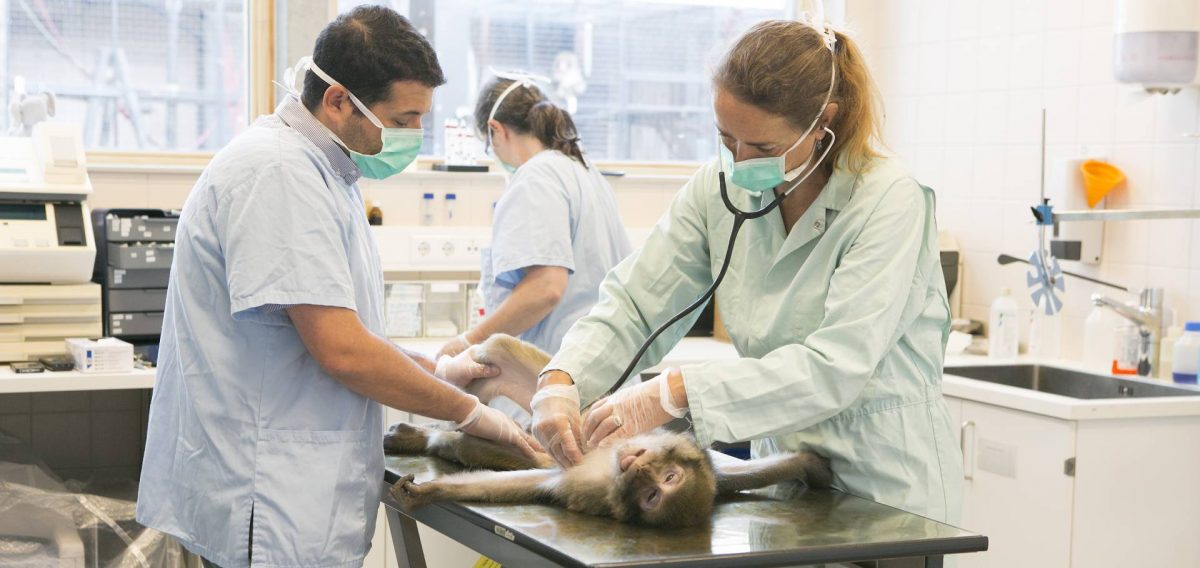Many of the animals we take in are social animals. However, because of their past, they have not always been able to learn how to interact with peers. For example, they do not know how to communicate or what social rules to follow. At AAP, we are convinced that social animals are happiest with peers, so we strive to eventually place them in a group.
For example, a monkey that comes from quarantine is first given time to get used to the new environment, the new animal caretakers and the outdoor enclosure. Then it is decided which group would be suitable for the animal. Once that has been decided, the monkey is first housed in an enclosure next to its peers. This way the animals can see, smell and hear each other. Only when there is positive contact through the mesh, do the animal caretakers try to add the new monkey to the group. This often starts with one of the group members, after which the other group members are gradually introduced. During this process, the caretakers observe and record the animals’ behavior. Many monkeys have never seen another monkey. They learn the rules of behavior from fellow group members and by copying them. This does not always happen overnight; it sometimes takes some fights before a new animal knows its place in the hierarchy and knows how to behave as a monkey.
Most monkeys also have to unlearn habits. Especially former pets are used to attention from people and will ignore their peers. You’ll never make friends that way, of course! By not giving the animals individual attention, they stop this sooner and seek contact with their peers more quickly. It varies per animal how long it takes before we can place him or her in a group. Animals that were taken away from their mothers at a very young age and therefore did not learn any social skills, for example, need more time to learn these skills. With lots of patience and attention this almost always succeeds!
(Semi-)solitary animals (animals that generally live alone, except in the mating season or during food surpluses), also get company from a peer at AAP. We know that these species also live together in the wild when there is sufficient food, so it is more efficient to place the animals in groups. These animals show a lot of social behavior towards each other, so group housing is also better for their welfare.
Upon arrival, animals first go into quarantine. Here they undergo an extensive medical examination. A personal treatment plan is then drawn up for each animal, which includes resocialization, any medication and nutrition. It happens all too often that an animal was given the wrong food for years (such as candy, coffee and cola), making a personalized diet necessary. In addition, animals often have medical problems due to improper accommodation, nutrition and lack of medical care. Monkeys previously housed in small cages or were isolated often exhibit stereotypical behaviors such as pacing or injuring themselves.
AAP has a team of expert veterinarians, veterinary assistants, behavioral biologists and experienced animal caretakers who strive to ensure that an animal becomes and remains healthy both physically and mentally.
Externally, we also have contact within our network and with (human) specialists. Like the ophthalmologists of the LUMC, who replaced both lenses of chimpanzee Fiffy.


